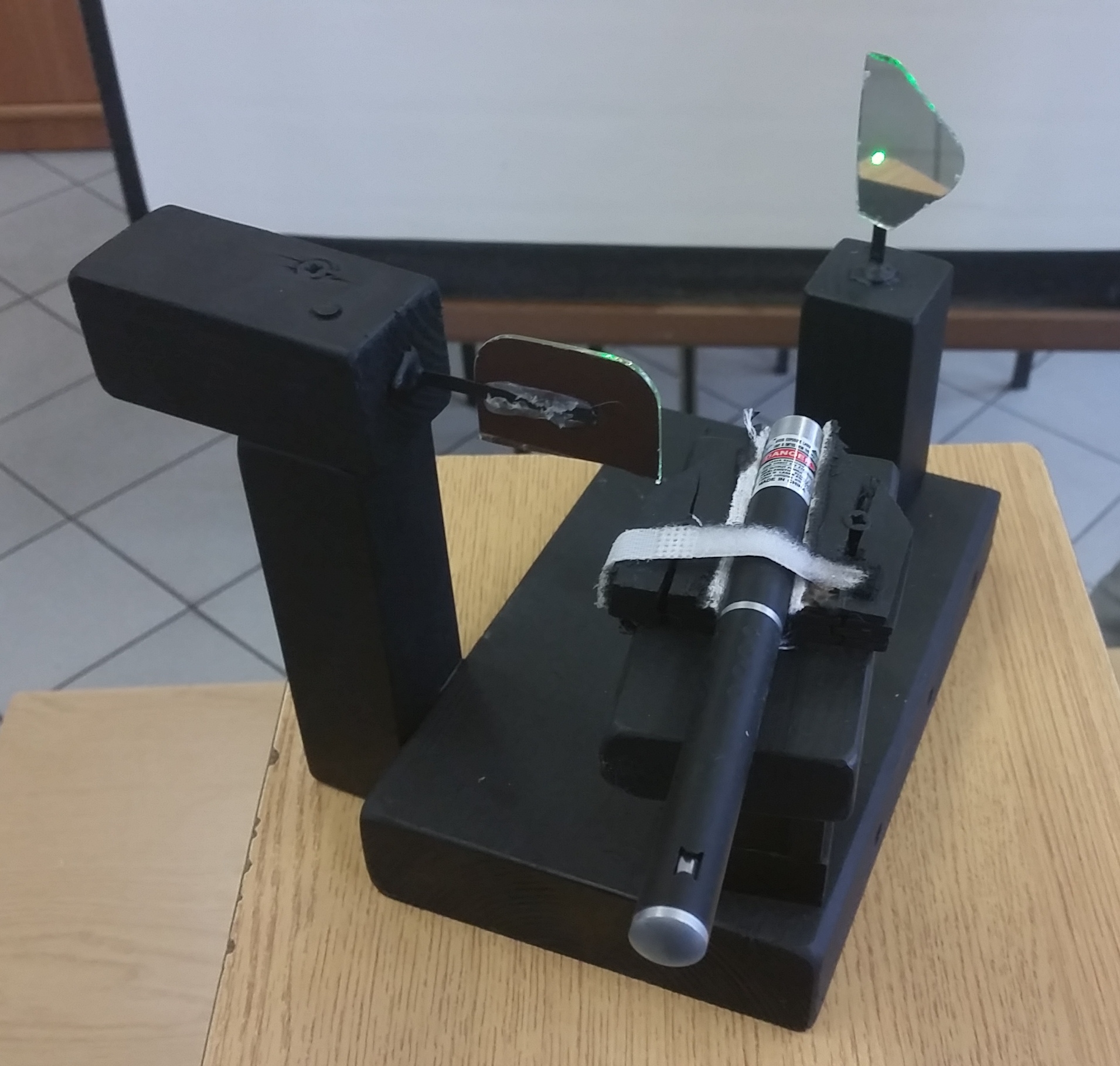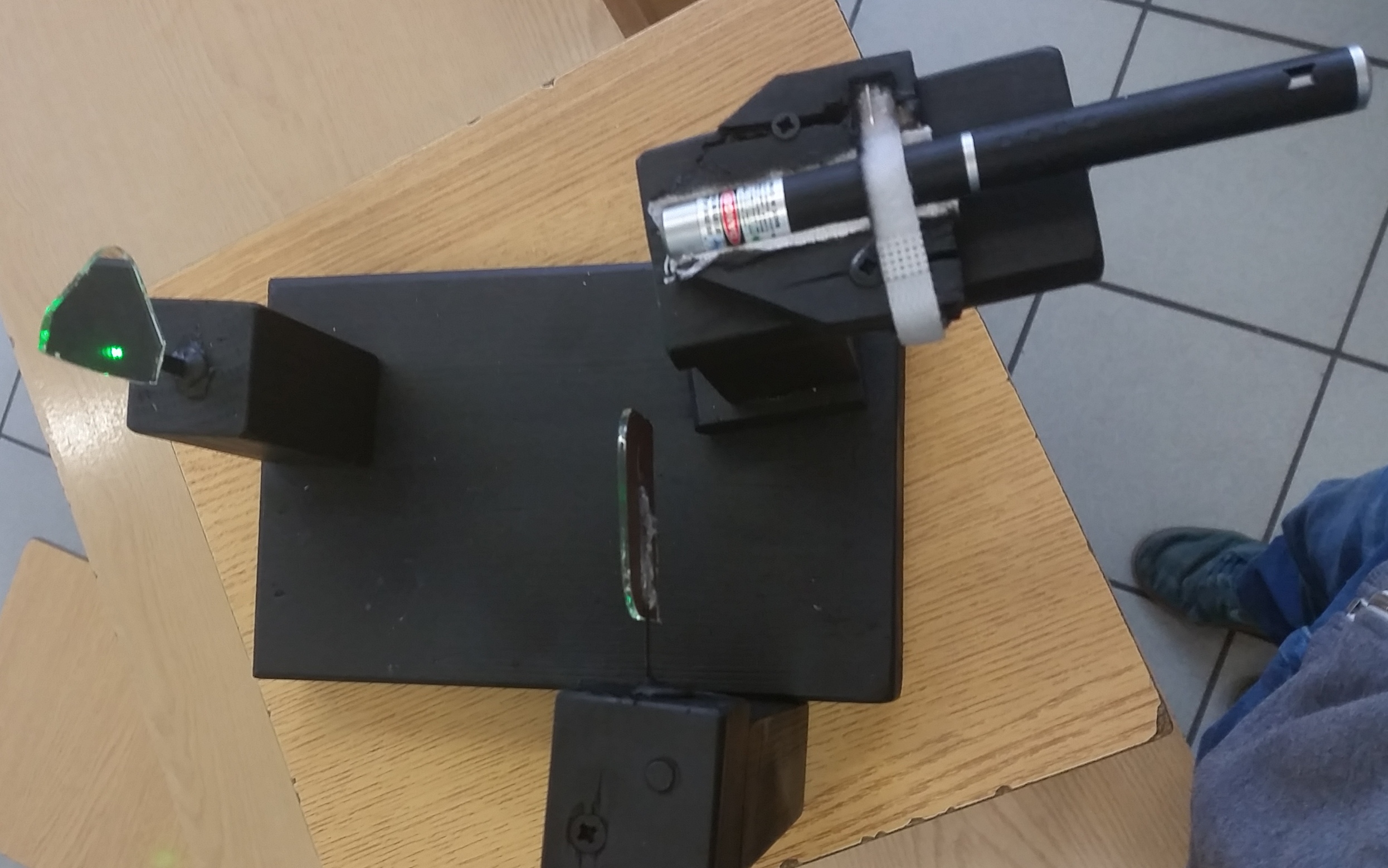

Materials:
Laser, 2 same size glass slides, 2 elastic and elongated metal plates, 1 wooden board, 3 wooden blocks which I used to make the construction of the experiment.
Procedure.
- I fix 3 same size wooden blocks of the bigger wooden board. Next I drill 2 blocks from the top. I glue the glass slides to the metal plates. I use smaller block to attach the laser and I fix it on the block that was not drilled. After that I place the plates with glass slides into the remaining two blocks and place one block vertically, the other horizontally. Then I select the best angle so the laser beam after reflecting the glass slides could readily reach the wall.
- I turn on the laser and I set the glass slides motion. Then I observe what happens.
Results.
If the ratio of oscillation period of the two glass slides is close to the ratio of two small natural numbers (e.g. 2/3) then we receive nice closed circle-shaped curves.
The curves obtained on our experiments are called Lissajous curves. Shape of the figure depends on the ratio of oscillation periods and amplitudes of both oscillations.